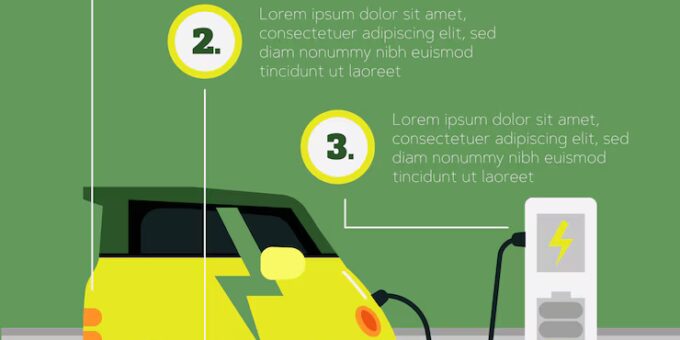
Introduction
Electric cars are transforming how we think about mobility. Quiet, efficient, and environmentally friendly, they’re quickly replacing gas-guzzlers on streets around the world. But while the drive is silent, the questions surrounding charging can be loud and confusing—especially for new EV owners. This complete guide will walk you through everything you need to know about charging electric cars, from the basics of plugging in at home to mastering public charging networks on the go.
How Electric Car Charging Works
Charging an electric car is like charging your phone—only bigger. The vehicle’s battery stores electricity from the grid, which powers the electric motor. There are three main levels of EV charging, and understanding the differences is essential to managing time and cost.
The Three Levels of EV Charging Explained
| Level | Voltage | Charge Time | Typical Location | Best For |
|---|---|---|---|---|
| Level 1 | 120V | 3–5 miles/hour | Standard household outlet | Overnight home charging |
| Level 2 | 240V | 12–80 miles/hour | Homes, workplaces, public stations | Daily use and faster home charging |
| Level 3 (DC Fast Charging) | 400V+ | 80% in 20–45 minutes | Highways, commercial areas | Long trips and fast top-ups |
Home Charging: Convenience Starts at Home
Most EV owners prefer charging at home—it’s convenient, cost-effective, and always available.
Level 1 Home Charging
-
Plugs into a regular wall outlet.
-
Adds 3–5 miles of range per hour.
-
Ideal for light driving or overnight charging.
Level 2 Home Charging
-
Requires a 240V outlet, like those used for dryers.
-
Charges 4 to 8 times faster than Level 1.
-
Installation cost: ~$500–$2,000 (may be offset by tax incentives).
-
Best for households with moderate to high daily mileage.
💡 Tip: Consider a smart charger that allows scheduling during off-peak hours for lower electricity rates.
Public Charging Stations: Power on the Go
If you’re commuting, road-tripping, or don’t have home charging, public chargers are a lifesaver.
Types of Public Chargers
-
Level 2 Chargers: Found at malls, restaurants, and offices. Ideal for longer stops.
-
DC Fast Chargers (Level 3): Found along highways and in urban areas. Charge most EVs to 80% in under an hour.
Popular Charging Networks
-
Tesla Superchargers: For Tesla vehicles (and now compatible with others via adapters).
-
Electrify America: Nationwide fast-charging network.
-
ChargePoint & EVgo: Large networks offering both Level 2 and DC fast charging.
-
PlugShare & A Better Route Planner (ABRP): Apps to locate available chargers in real time.
Charging Speeds: What Affects Charging Time?
Several factors influence how fast your EV charges:
-
Battery Size: Larger batteries take longer to charge.
-
State of Charge: Fast charging slows after 80% to protect the battery.
-
Ambient Temperature: Cold weather can reduce charging speed and efficiency.
-
Charging Hardware: Vehicle and charger compatibility plays a big role.
⚠️ Note: Charging from 80% to 100% often takes just as long as 0% to 80%. For efficiency, many drivers unplug at 80%.
Cost of Charging: What Will You Pay?
Charging costs vary based on location and electricity rates:
Home Charging Costs
-
Average U.S. rate: ~$0.13/kWh
-
Example: 60 kWh battery × $0.13 = $7.80 for a full charge (~250 miles)
-
Use time-of-use (TOU) plans for lower overnight rates.
Public Charging Costs
-
Level 2: $0.15–$0.35 per kWh
-
DC Fast Charging: $0.30–$0.60 per kWh or session-based pricing
-
Some workplaces and stores offer free charging as an incentive.
📊 Comparison: Even at the high end, EVs still cost less to fuel than gas vehicles.
How to Pay at Charging Stations
Paying is simple:
-
Mobile Apps (ChargePoint, Tesla, EVgo)
-
RFID Cards linked to your account
-
Credit/Debit Cards (at some chargers)
-
Auto-Billing through vehicle infotainment systems (e.g., Tesla plug & pay)
🔌 Pro Tip: Create accounts with major networks in advance to access member-only rates and avoid delays.
Battery Health and Charging Best Practices
-
Avoid constant fast charging—it stresses the battery over time.
-
Try to keep charge between 20–80% for daily use.
-
Don’t let your battery sit at 0% or 100% for extended periods.
-
Precondition your EV in cold weather to maximize efficiency and protect the battery.
🔋 Long-Term Tip: Modern EV batteries can last 8–15 years or 150,000+ miles with proper care.
Charging Incentives and Rebates
Many governments offer rebates for home charger installation, including:
-
U.S. Federal Tax Credit: Up to 30% of equipment and installation costs.
-
State/Local Utility Programs: Cash rebates or bill credits for EVSE (Electric Vehicle Supply Equipment).
-
Canada, UK, EU: Vary by region but often include charger grants and tax deductions.
🌍 Good to Know: Solar + EV charging is a powerful combination. Many homes are now pairing rooftop panels with smart chargers to go 100% renewable.